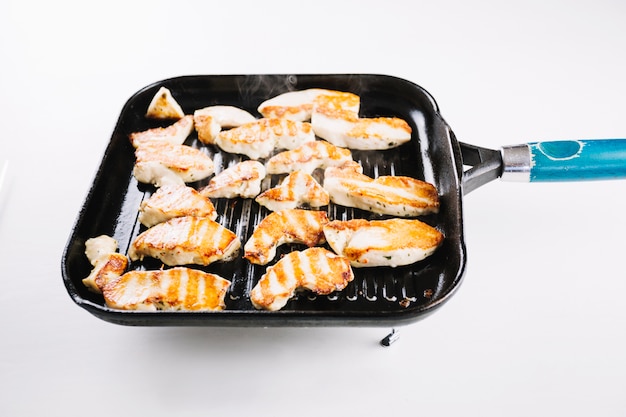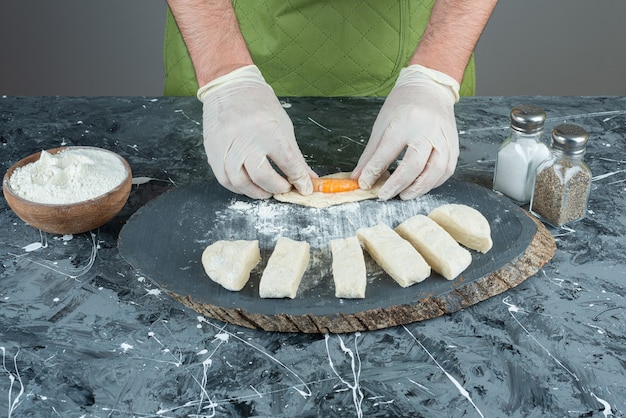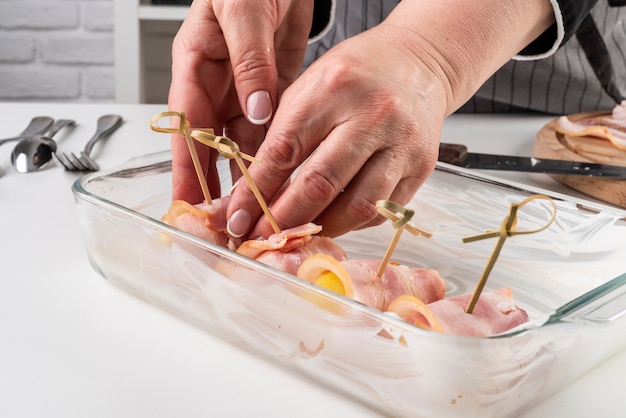Ah, frozen crab legs! They’re a classic for a reason, aren't they? That delicate, sweet flavour, the satisfying crack of the shell... it's a real treat. But how long do you cook them for? Well, it's not quite as straightforward as you might think. Cook them too long, and you end up with dry, rubbery meat. Not good! Undercooked? You might be in for a bit of an upset tummy, and nobody wants that! So, let's dive in and learn how to get those frozen crab legs perfectly cooked every time. We'll cover everything from choosing the right legs to serving them up with the perfect accompaniments. Ready? Let's get cracking!
Part 1: Picking the Perfect Crab Legs

First things first: we need to pick the right crab legs. There's a whole world of crab out there, but for a good all-round experience, I'd recommend snow crab or king crab. Both have lovely, sweet flavour and a nice, firm texture that holds up well during cooking.
Choosing the Best Legs:
Now, when you're browsing the frozen seafood section, you want to pick legs that are a nice, bright white colour. Avoid any that are discolored, or show signs of freezer burn (those dry, white patches). Give them a little sniff too. They shouldn't smell fishy, just a hint of that fresh ocean air.
The Size Factor
Okay, so you've got your crab legs, but now you need to decide on the size. I'm a bit of a crab leg connoisseur, so I'll be honest, I prefer the larger ones. They're more impressive on the plate, and the meat is juicier and more substantial. But, if you're on a budget, smaller legs are perfectly fine. They just might take a bit less cooking time. Don't worry, we'll cover the specific cooking times later on.
Part 2: Getting Your Kitchen Ready for Crab Legs

Alright, you've got your crab legs, now it's time to get your kitchen ready for action. You'll need a large pot, big enough to comfortably fit your crab legs. Trust me, you don't want them crammed in like sardines, it won't cook properly. You'll also need a thermometer – you can get a good one for a few pounds at most supermarkets. Finally, grab a large bowl and fill it with ice-cold water. We're going to give those crab legs a bit of a shock treatment later on, which will help them cook evenly.
Part 3: Defrosting and Prepping Those Crab Legs

Before you chuck those frozen beauties straight into the pot, they need to defrost. I wouldn't recommend using the microwave, as it can make the meat tough. The best way is to let them defrost in the fridge overnight. If you're in a rush, the 'defrost' setting on your freezer can also do the trick. Once they're defrosted, give them a good rinse under cold water and pat them dry with kitchen paper.
The Cold water bath:
Now here's where that ice-cold water comes in. It's a crucial step that many people miss, but it really makes a difference. Submerge your crab legs in the ice-cold water for 15-20 minutes. This helps to firm up the meat and ensures it cooks evenly. Just picture those crab legs, sitting in that cold bath, looking all refreshed and ready to go!
Part 4: Choosing Your Cooking Method
Alright, now we're ready to cook! There are a few different ways to cook frozen crab legs, but I'll tell you about the two most common and effective methods.
1. The Steaming Method:
This is probably the most popular, and in my opinion, the best way to cook crab legs. It's simple, it's quick, and it preserves all the delicate flavour of the meat. Grab a large steamer basket, and place it over a pot of boiling water. Make sure the water isn't touching the basket. Gently lay your crab legs in the basket and cover the pot with a lid. Now, here's the key: you want to steam them for 8-10 minutes per pound of crab legs. Easy peasy, lemon squeezy!
2. The Boiling Method:
Don't have a steamer? Don't fret! You can also boil your crab legs. Fill a large pot with water and bring it to a rolling boil. Add a tablespoon of salt, a pinch of pepper, and a bay leaf to the water. Gently lower your crab legs into the boiling water, and bring the water back to a boil. Then lower the heat to a simmer and cook for 8-10 minutes per pound. Simple as that!
Part 5: Knowing When Your Crab Legs Are Ready
So, your crab legs are in the pot, and you're patiently waiting for them to cook. But how do you know when they're done? Well, there are a couple of signs to look out for. When the meat is cooked, it will turn a nice, bright white. You can also check the meat by using a fork. If it comes away easily from the shell, it's ready. If not, give it a few more minutes.
Don't Overcook Those Delicate Legs:
Remember, overcooked crab meat is dry and rubbery, so don't get carried away. Once the crab legs are cooked, carefully remove them from the pot and drain them. If you're steaming, just lift the steamer basket out of the pot. If you're boiling, use a pair of tongs to transfer the legs to a colander.
Part 6: Serving Up Your Delicious Crab Legs
The moment of truth has arrived! You've got your perfectly cooked crab legs, now it's time to enjoy them. You can serve them whole, or you can crack the legs open and serve the meat on a platter. For that satisfying cracking experience, you'll need a good crab cracker.
The Perfect Accompaniments
I like to serve my crab legs with a simple lemon-butter sauce. Just melt some butter in a saucepan, add a squeeze of lemon juice, and season with salt and pepper. You can also add some chopped fresh herbs for extra flavour. And don't forget the napkins! Those crab legs can get messy, especially if you're going for the whole 'eat-it-with-your-hands' experience.
Part 7: Storing Your Leftovers
If you have any leftovers, store them in the fridge in an airtight container. They'll keep for up to 3 days. You can reheat them by steaming or boiling them again, or you can just eat them cold.
Part 8: Tips and Tricks for Perfect Crab Legs
Here are a few tips and tricks to help you make the most of your crab leg cooking experience.
1. Avoid Overcrowding the Pot:
It's important to give your crab legs enough space to cook properly. Overcrowding the pot will prevent them from cooking evenly. Make sure they have enough room to move around freely.
2. Use a Thermometer:
A thermometer is your best friend when it comes to cooking crab legs. It will help you ensure that the meat reaches the right temperature, which is around 140-145°F (60-63°C).
3. Skip the Salt:
This one is a bit controversial, but I'm firmly against salting the water when you're cooking crab legs. The salt can make the meat tough. I prefer to season them with salt and pepper after cooking.
4. Add a Touch of Spice:
If you're feeling adventurous, try adding some spices to your crab legs. A pinch of paprika, cayenne pepper, or chili powder will give them a bit of a kick.
5. Experiment, Experiment, Experiment!
Cooking crab legs is all about experimentation. Try different cooking methods, different seasonings, and different sauces. You never know, you might discover your new favourite way to enjoy them!
Part 9: Frequently Asked Questions About Frozen Crab Legs
Here are a few frequently asked questions about cooking frozen crab legs.
1. Can I cook frozen crab legs without thawing them?
You can, but it's not recommended. Frozen crab legs need to be defrosted before cooking to ensure they cook evenly. The cooking time will also be longer if you cook them frozen.
2. What if my crab legs are too small?
No problem! Smaller crab legs will take less time to cook. You can reduce the cooking time by 1-2 minutes per pound.
3. How do I know if my crab legs are cooked properly?
The meat will turn a bright white when it's cooked. You can also check the meat by using a fork. If it comes away easily from the shell, it's ready.
4. Can I reheat cooked crab legs?
Yes, you can reheat cooked crab legs. You can steam or boil them again, or you can just eat them cold.
5. What happens if I overcook my crab legs?
Overcooked crab meat is dry and rubbery. It's best to err on the side of undercooking rather than overcooking.
So there you have it, my friend, a complete guide to cooking frozen crab legs. Now go forth and enjoy those delicious crustaceans!
Everyone is watching

Prime Rib Roast Cooking Time Chart: Per Pound Guide
Cooking TipsPrime rib roast. Just the name conjures images of lavish dinners, crackling fires, and hearty laughter. It’s ...

How Long to Bake Potatoes in the Oven (Perfect Every Time)
Cooking TipsBaked potatoes are a staple in my kitchen. They're incredibly versatile, delicious, and surprisingly easy to m...

Perfect Rice Every Time: The Ultimate Guide to Cooking Rice
Cooking TipsAs a self-proclaimed foodie, I've always been a bit obsessed with rice. It's the foundation of countless cuisi...

The Ultimate Guide to Cooking Asparagus: Tips, Techniques, and Recipes
Cooking TipsAsparagus. The mere mention of this spring delicacy conjures up images of vibrant green spears, crisp and burs...

Ultimate Guide to Cooking the Perfect Thanksgiving Turkey
Cooking TipsThanksgiving. Just the word conjures up images of overflowing tables laden with delicious food, the scent of r...
